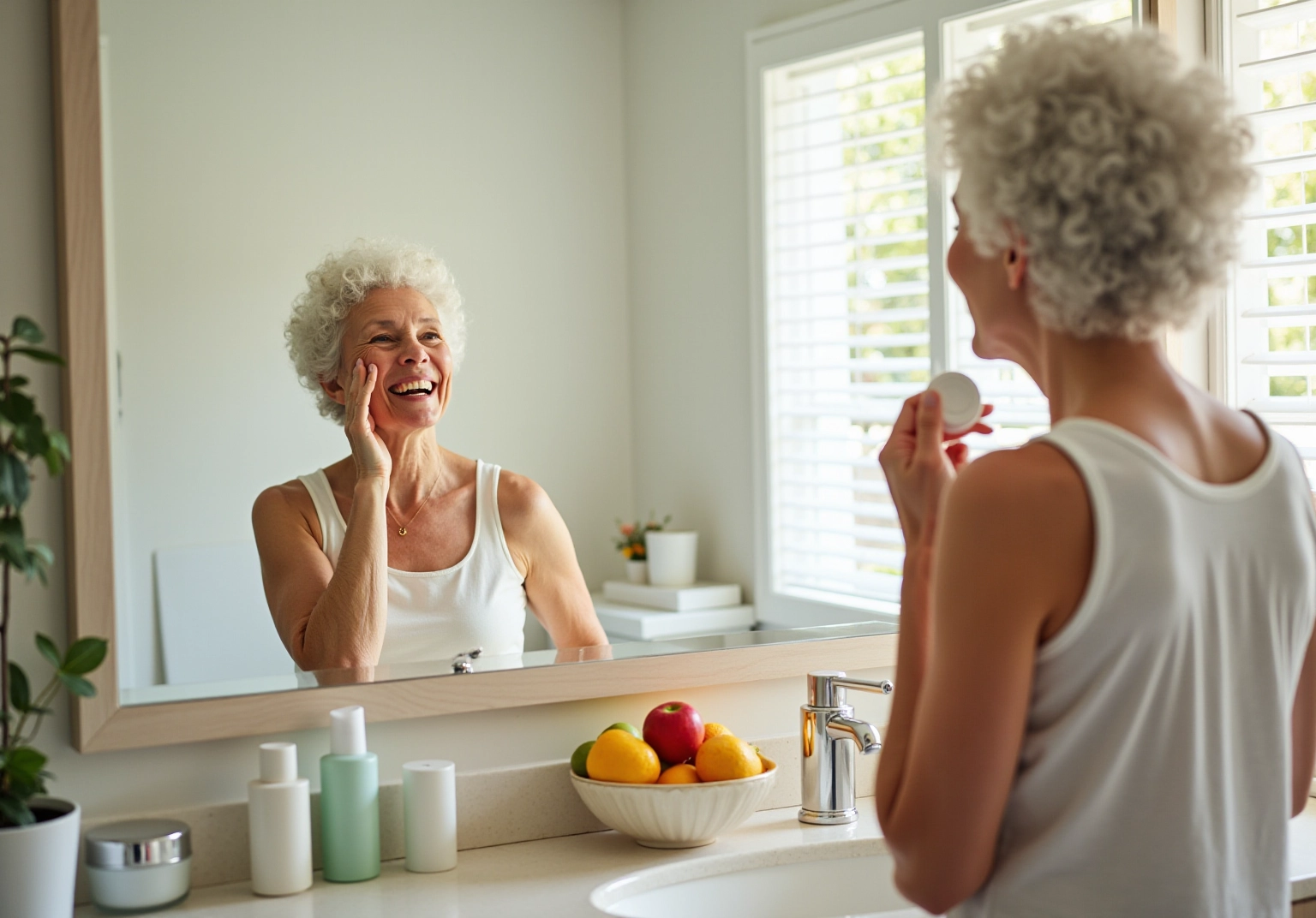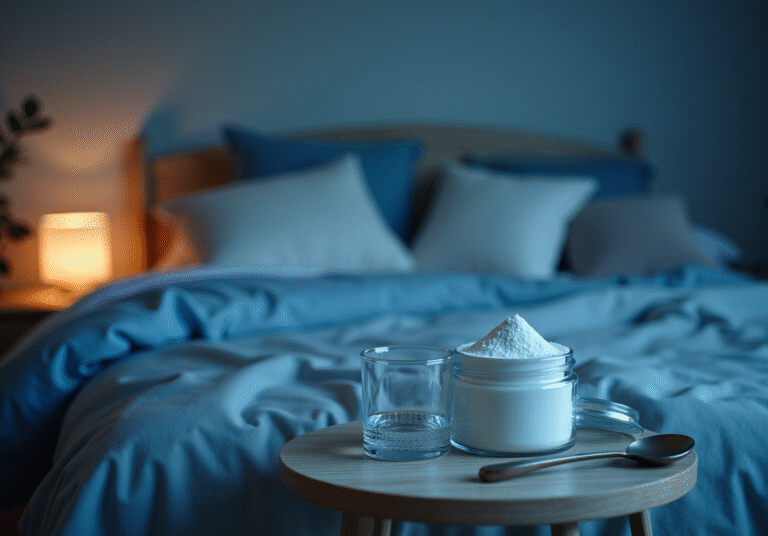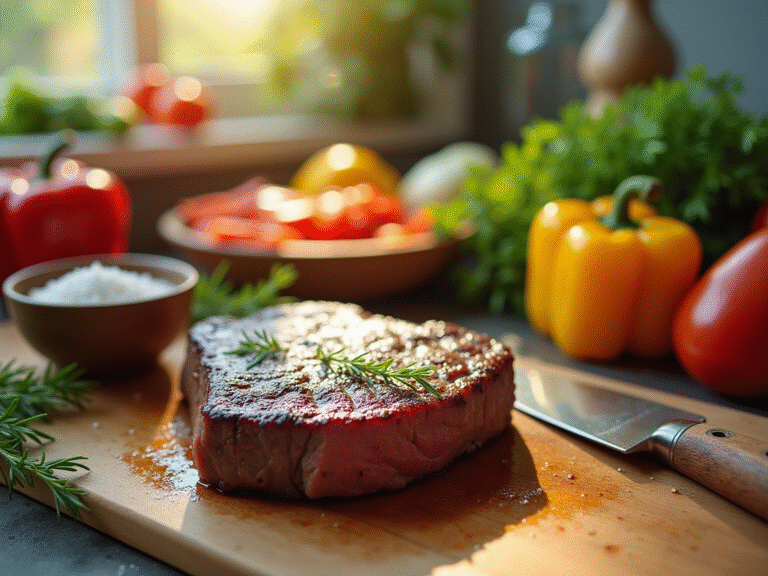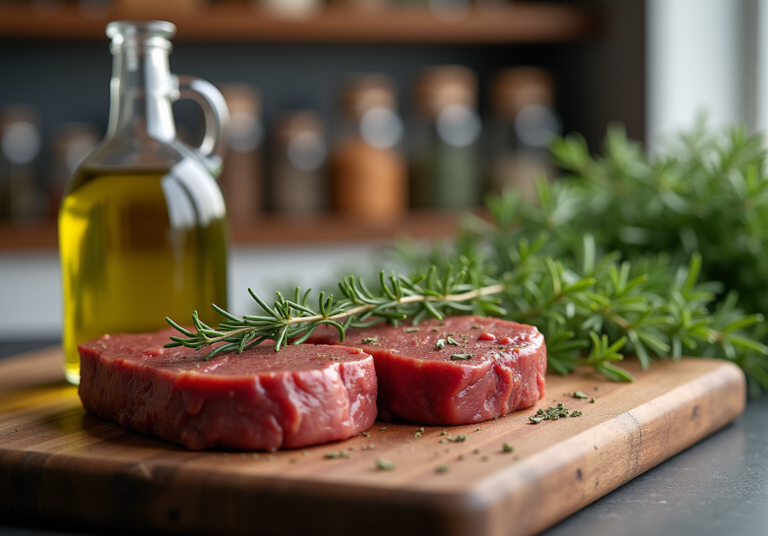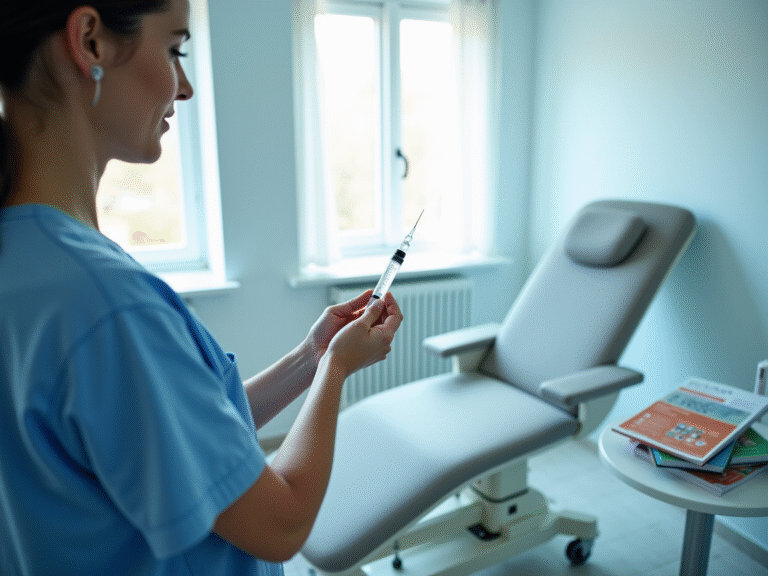4 Steps to Start Looking Younger Than Your Age Today
Overview
To start looking younger than your age today, it is essential to evaluate both your biological and perceived age. Adopting key lifestyle changes can make a significant difference. These changes include:
- Regular exercise
- Stress management
- Adequate sleep
- Hydration
- Sun protection
Research supports the benefits of these practices for skin health and overall vitality. By implementing these strategies, you can enhance your appearance and foster a more youthful self-image.
Introduction
The quest for youthful vitality transcends mere aesthetics; it embodies a holistic approach to well-being that intertwines physical health, self-perception, and lifestyle choices.
As individuals navigate the complexities of aging, understanding the distinction between biological and perceived age becomes pivotal.
This article explores actionable steps that not only promise to enhance one’s appearance but also foster a renewed sense of self.
What if the secret to looking younger lies not just in skincare routines but in transformative lifestyle changes and innovative therapies?
Furthermore, explore the multifaceted strategies that can empower anyone to embrace their age while radiating a youthful glow.
Understand Your Biological and Perceived Age
To embark on your journey towards looking younger than your age, it is crucial to evaluate both your biological and perceived age. Biological age can be assessed through various wellness markers, including blood tests, skin elasticity, and overall physical fitness. Additionally, online calculators that take into account factors such as lifestyle, diet, and exercise habits can provide insight. Conversely, perceived age is subjective and shaped by your self-image and how others view you. Take a moment to reflect on how old you feel and how you believe others perceive you. This self-evaluation will guide your subsequent actions towards achieving a more vibrant appearance, which can contribute to looking younger than your age.
Research shows that individuals often underestimate the influence of perceived age on self-image. Studies indicate that a positive self-perception can significantly enhance overall well-being. For example, findings from a study on self-perception of aging revealed that individuals with older biological ages reported feeling in poorer health and were perceived as looking older by observers. Notable figures, such as Betty Friedan, have emphasized this sentiment, stating, ‘Aging is not lost youth but a new stage of opportunity and strength.’ This underscores the importance of embracing one’s age while striving for vitality.
Furthermore, as demographic trends indicate that individuals aged 60 years and above now outnumber those under 5 years, understanding these dimensions of age becomes increasingly relevant. Incorporating various perspectives on aging, such as Walt Disney’s assertion that ‘Laughter is timeless. Imagination has no age. And dreams are forever,’ can deepen your understanding. Recognizing these dimensions of age can empower you to take actionable steps towards looking younger than your age and feeling youthful.
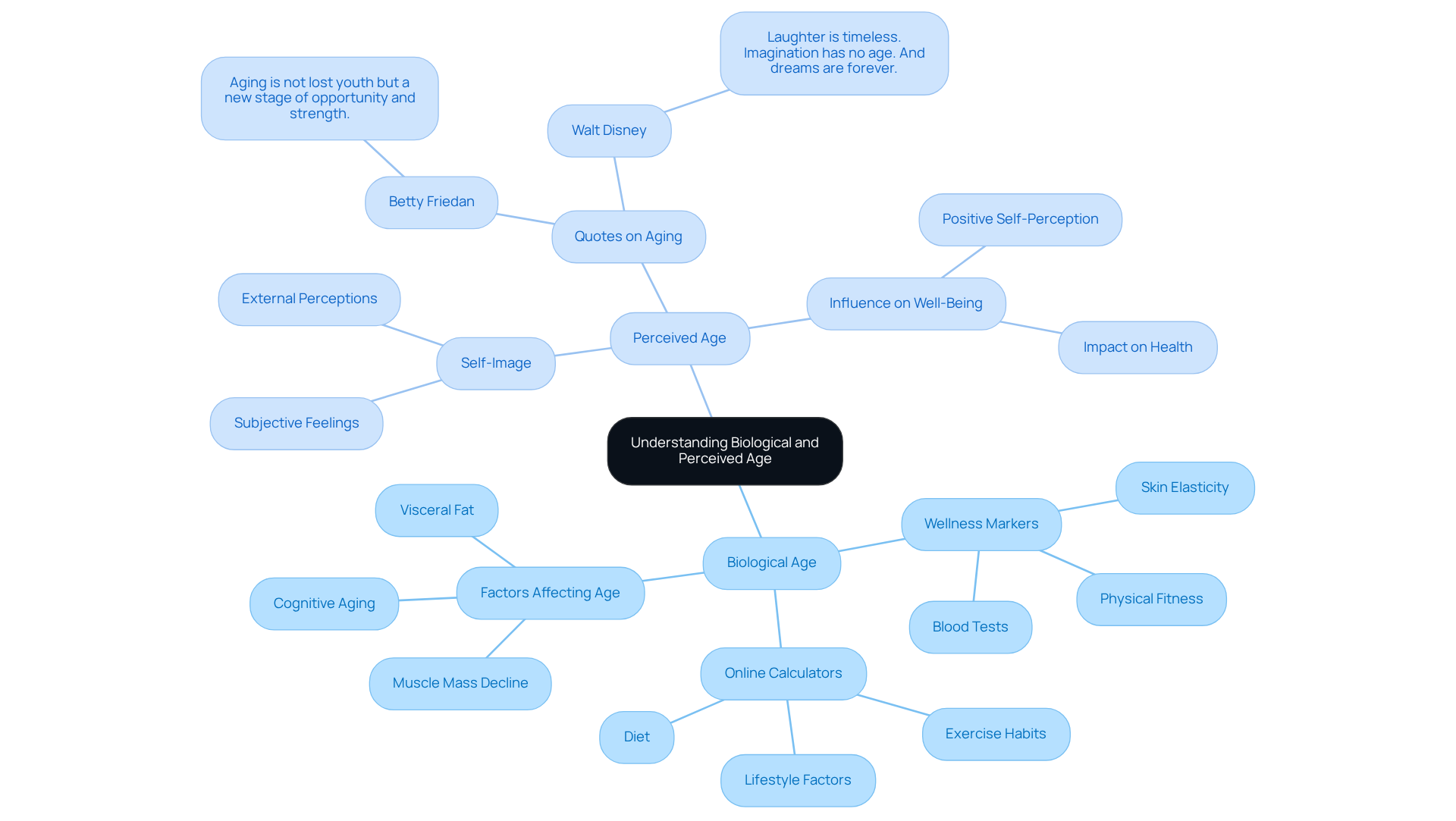
Adopt Key Lifestyle Changes for Youthful Appearance
To enhance your youthful appearance, consider adopting the following lifestyle changes:
-
Regular Exercise: Aim for at least 150 minutes of moderate aerobic activity each week, combined with strength training exercises twice a week. Participating in practices such as yoga and Pilates can enhance flexibility and posture, leading to a more vibrant appearance. Studies indicate that active individuals can have telomeres that are longer by about 9 years compared to their sedentary counterparts, highlighting the profound impact of regular exercise on aging. Additionally, regular moderate exercise can increase life expectancy by about 7 years compared to those who do not engage in such activities.
-
Stress Management: Chronic stress can accelerate the aging process. Incorporate mindfulness practices such as meditation, deep breathing, or tai chi into your daily routine to effectively reduce stress levels. Research indicates that managing stress can lead to enhanced self-esteem and overall well-being, which are essential for looking younger than your age. As Dr. Ulrich Orth observed, self-esteem is linked to improved well-being and success in life.
-
Adequate Sleep: Prioritize getting 7-9 hours of quality sleep each night. Rest is vital for tissue repair and general health. Establishing a calming bedtime routine can significantly improve sleep quality, helping your body rejuvenate and maintain its youthful vitality, which contributes to looking younger than your age.
-
Hydration: Drink plenty of water throughout the day to keep your complexion moisturized and maintain its elasticity. Aim for at least 8 glasses of water daily, as proper hydration is vital for a radiant complexion and can contribute to looking younger than your age.
-
Sun Protection: Shield your body from UV damage by applying sunscreen daily, even on overcast days. This straightforward action can help in looking younger than your age by averting early aging and harm, ensuring that your complexion stays fresh and radiant for years ahead.

Incorporate Nutrient-Rich Foods into Your Diet
To nourish your body and promote a youthful appearance, consider incorporating the following nutrient-rich foods into your diet:
-
Fatty Fish: Rich in omega-3 fatty acids, fatty fish like salmon and mackerel are essential for skin health. They help reduce inflammation and support collagen production, crucial for maintaining skin elasticity and firmness. Health experts recommend that adults consume 500 mg of omega-3s daily, which is equivalent to two servings of fatty fish each week, to reap optimal health benefits.
-
Leafy Greens: Vegetables such as spinach and kale are packed with antioxidants and vitamins that combat oxidative stress. Recent studies suggest that these greens can significantly enhance moisture levels and overall appearance. For instance, research indicates that the antioxidants found in leafy greens can improve skin texture and hydration, making them a vital addition to your diet.
-
Berries: Blueberries, strawberries, and raspberries are loaded with antioxidants that protect your skin from damage and improve its texture. Research suggests that these fruits may help mitigate the effects of aging on the skin’s surface, promoting a vibrant complexion.
-
Nuts and Seeds: Almonds, walnuts, and flaxseeds provide healthy fats and vitamin E, both essential for maintaining skin elasticity. Notably, women who consumed half a teaspoon of omega-3-rich flaxseed oil daily saw a 39% increase in moisture levels after 12 weeks, underscoring the importance of these nutrients for skin health.
-
Quality Animal-Based Foods: Include nutrient-dense options such as organ meats (like liver) and grass-fed beef, which are rich in vitamins and minerals that enhance overall well-being and vitality. These foods are crucial for improving skin condition and combating signs of aging.
-
Hydrating Foods: Incorporate fruits and vegetables with high water content, such as cucumbers and watermelon, to help maintain hydration. Proper hydration is vital for looking younger than your age and preventing dryness and irritation, as studies have shown that adequate hydration significantly impacts skin health.
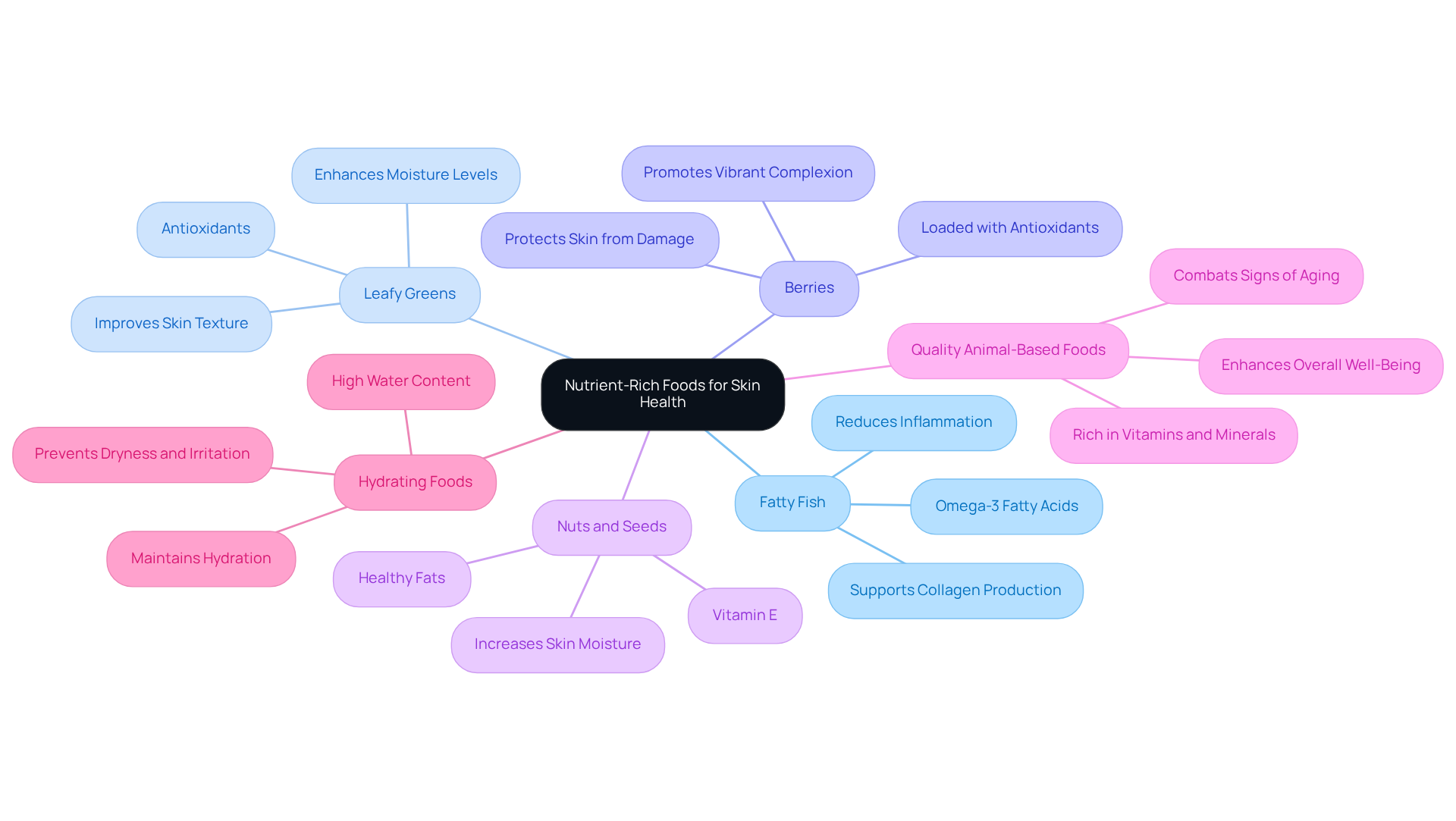
Explore Innovative Therapies and Treatments
In addition to lifestyle and dietary changes, consider exploring these innovative therapies and treatments:
-
Hormone Therapy: Consult with a healthcare provider about hormone replacement therapy (HRT), which can help balance hormones that decline with age. Research indicates that HRT can improve elasticity and overall vitality, enhancing the quality of life for many women. However, it’s important to note that the Women’s Health Initiative study has caused uncertainty regarding the long-term effects of hormone therapy, reflecting ongoing debates in the medical community.
-
Microneedling: This procedure stimulates collagen production, greatly enhancing texture and firmness. By creating micro-injuries with tiny needles, microneedling encourages the body’s natural healing process, leading to a smoother complexion and helping you in looking younger than your age. Studies show that after four sessions, participants experienced a 400% increase in collagen and elastin production, with 93.8% noting visible improvements.
-
LED Light Therapy: This non-invasive treatment utilizes specific wavelengths of light to promote rejuvenation and reduce signs of aging. Dermatologists suggest this therapy for its capacity to improve complexion and texture without downtime.
-
Platelet-Rich Plasma (PRP) Therapy: Utilizing your own blood, PRP therapy enhances tissue healing and rejuvenation, contributing to looking younger than your age. This method has gained popularity for its effectiveness in enhancing complexion quality and reducing fine lines.
-
Nutritional Supplements: Consider supplements like collagen peptides or antioxidants that support health from the inside out. These nutrients can play a crucial role in maintaining skin elasticity and overall vitality. Always consult with a healthcare professional before starting any new supplement regimen.
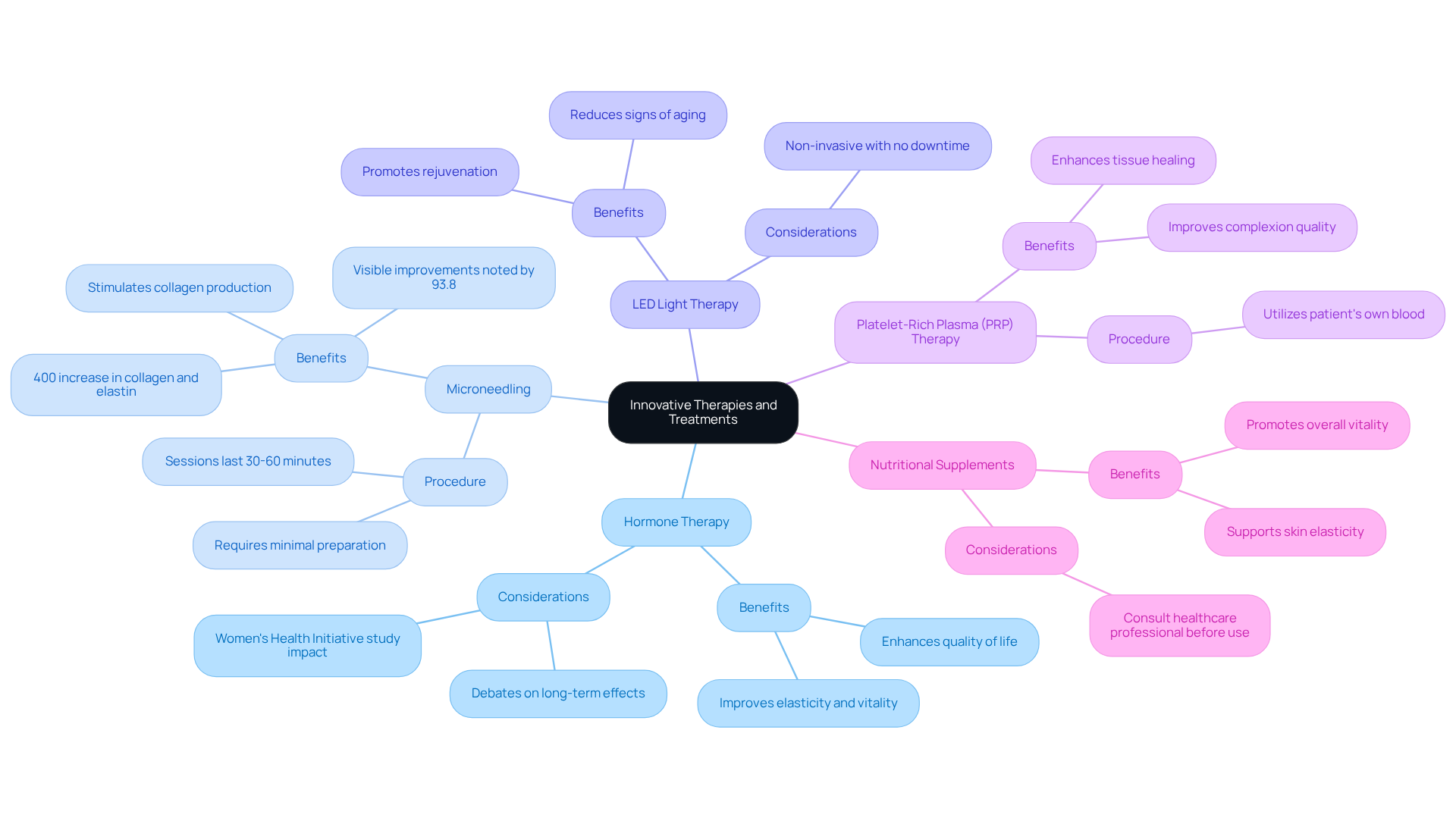
Conclusion
Embracing the journey towards looking younger than your age involves a multifaceted approach. This encompasses understanding both biological and perceived age, adopting healthy lifestyle changes, incorporating nutrient-rich foods, and exploring innovative therapies. By recognizing the interplay between how we feel and how we are perceived, individuals can take actionable steps to enhance their vitality and appearance.
Key strategies discussed include:
- The importance of regular exercise
- Effective stress management
- Quality sleep
- Proper hydration
- Sun protection
Each of these elements plays a crucial role in maintaining skin health and overall well-being. Additionally, nourishing the body with foods rich in essential nutrients and considering advanced treatments can significantly contribute to achieving a more youthful look.
Ultimately, the quest to look younger than your age is not just about external appearances; it is about fostering a healthy mindset and lifestyle that promotes longevity and vitality. By implementing these steps, individuals can not only improve their appearance but also enhance their quality of life. This encourages a positive self-image and a vibrant outlook on aging. Take charge of your aging journey today by integrating these practices into your daily routine.
Frequently Asked Questions
What is the difference between biological age and perceived age?
Biological age is assessed through wellness markers such as blood tests, skin elasticity, and physical fitness, while perceived age is subjective and shaped by self-image and how others view you.
How can I assess my biological age?
Biological age can be evaluated through various wellness markers, including blood tests, skin elasticity, and overall physical fitness. Online calculators that consider lifestyle, diet, and exercise habits can also provide insight.
Why is perceived age important for self-image?
Perceived age significantly influences self-image and overall well-being. A positive self-perception can enhance well-being, as studies show that individuals who feel older often report poorer health and are perceived as looking older.
What impact does self-perception of aging have on health?
Research indicates that individuals with older biological ages who perceive themselves as older tend to feel in poorer health and are perceived as looking older by others.
How can I take actionable steps towards looking younger than my age?
Reflecting on both your biological and perceived age can guide your actions. Embracing your age while striving for vitality and incorporating positive perspectives on aging can empower you to take steps towards a more vibrant appearance.
What notable perspectives on aging are mentioned in the article?
The article references Betty Friedan’s view that ‘Aging is not lost youth but a new stage of opportunity and strength,’ and Walt Disney’s assertion that ‘Laughter is timeless. Imagination has no age. And dreams are forever,’ highlighting the importance of embracing age and vitality.
Why is understanding age dimensions increasingly relevant today?
As demographic trends show that individuals aged 60 and above now outnumber those under 5 years, understanding both biological and perceived age becomes increasingly relevant in promoting well-being and vitality in aging populations.
